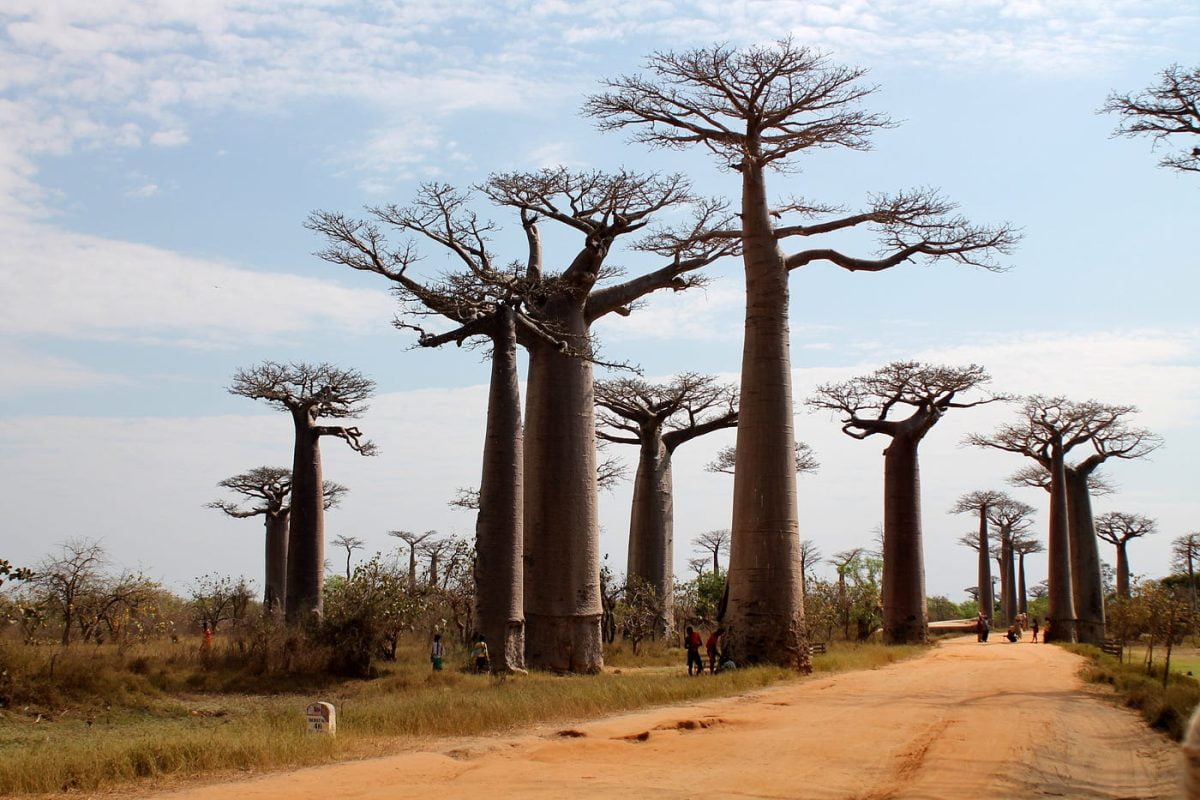Madagascar, a land of untamed beauty, is home to one of the world’s most unique natural wonders – the towering baobab trees. These ancient giants have become an iconic symbol of the island’s rich biodiversity, creating breathtaking landscapes that leave visitors in awe. Along the dirt roads of Madagascar, these incredible trees form a captivating silhouette against the sky, especially along the famous Avenue of the Baobabs. For anyone seeking an unforgettable adventure, the baobab-lined roads of Madagascar are a must-visit destination.
The Mystical Baobab Trees of Madagascar
The baobab tree, often referred to as the “Tree of Life,” is one of Madagascar’s most extraordinary natural features. With their massive trunks, which can reach up to 30 meters in height and over 10 meters in diameter, these trees are not only impressive in size but also in age. Some baobabs are believed to be over 1,000 years old, making them living witnesses to the island’s evolving landscape. Their swollen trunks store water, which allows them to survive in Madagascar’s dry climate, earning them a sacred status among locals.
The Famous Avenue of the Baobabs
One of the most iconic places in Madagascar is the world-renowned Avenue of the Baobabs. Located near the city of Morondava, this natural corridor is lined with dozens of baobabs that stretch along a dirt road for about 260 meters. As the sun sets, the baobabs cast long shadows, creating one of the most picturesque views in Madagascar. Photographers from around the world flock here to capture the surreal beauty of this place. The avenue has even been considered for UNESCO World Heritage status, as it represents the enduring relationship between nature and the Malagasy people.
The Best Time to Visit the Avenue of the Baobabs
If you’re planning to visit Madagascar, the best time to see the majestic baobabs is during the dry season, which runs from April to November. During these months, the weather is more favorable, with clear skies that enhance the beauty of the trees. The sunset at the Avenue of the Baobabs is a sight to behold, and many travelers time their visit to witness the sun dipping behind the ancient trees, bathing the landscape in golden light. Make sure to bring your camera to capture the magic of this moment!
Baobab Trees and Local Folklore
In Madagascar, baobabs are not just trees; they are woven into the fabric of the island’s folklore and traditions. The Malagasy people hold these trees in high regard, often attributing them with spiritual significance. One legend says that the baobab was once an arrogant tree, and as a punishment, the gods planted it upside down, which is why it appears as though its roots are reaching towards the sky. For locals, baobabs are a symbol of resilience and survival, traits that have helped them thrive in Madagascar’s often harsh environment.
Exploring Other Baobab-Lined Roads
While the Avenue of the Baobabs is undoubtedly the most famous baobab-lined road in Madagascar, there are several other equally captivating places to explore. The Kirindy Forest, located nearby, is home to not only baobabs but also a wide array of wildlife, including lemurs and rare bird species. Another hidden gem is the Tsingy de Bemaraha National Park, where you can find baobabs growing amidst jagged limestone formations, creating a surreal and otherworldly landscape.
The Ecological Importance of Baobabs
Beyond their beauty, baobabs play a critical role in the ecosystems of Madagascar. Their hollow trunks provide shelter for various species of birds and bats, while their fruit, known as monkey bread, is a vital source of food for both animals and humans. Additionally, the flowers of baobab trees are pollinated by nocturnal creatures like bats, which ensures the continuation of the species. The loss of these ancient trees would have a profound impact on the environment, which is why conservation efforts are essential to protect them for future generations.
Wildlife You Can Spot Around Baobabs
Madagascar’s baobab forests are teeming with wildlife, making them a paradise for nature lovers. Along with lemurs, which are perhaps the island’s most famous inhabitants, you can also find chameleons, birds, and other unique creatures in these areas. The baobab trees themselves often act as a gathering place for animals, providing food and shelter

